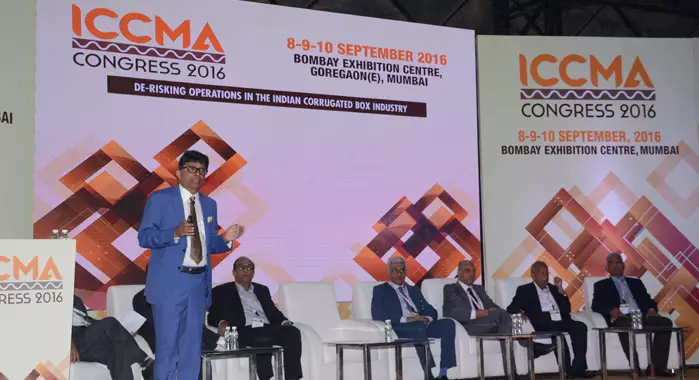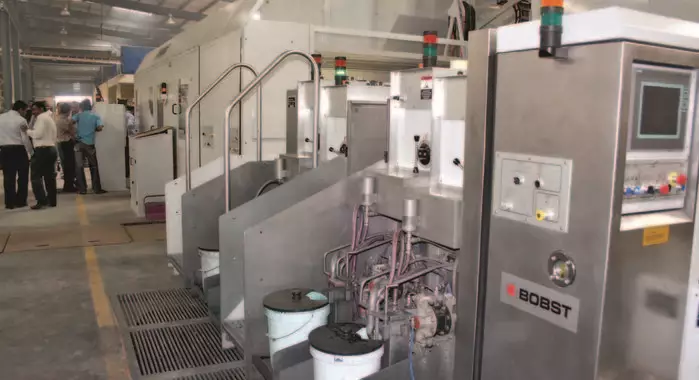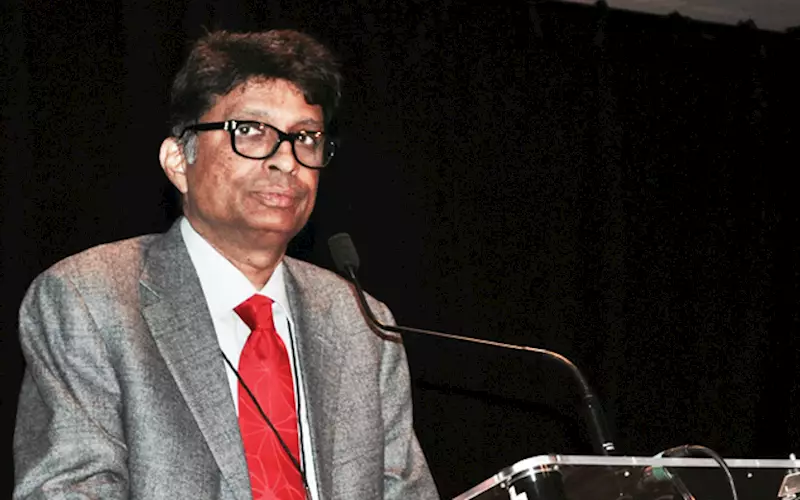In a chat with Ramu Ramanathan of PrintWeek India, Kirit Modi, chairman and managing director, Horizon Packs and president, The Indian Corrugated Case Manufacturers Association (ICCMA), discusses paper supply disruptions and emphasises on the need for smart investments, trained manpower, and best practices.
You have been quite vocal about the rising kraft paper price has caused a supply disruption. The major reason that has led to an increase in kraft paper price is a shortage of raw material supply to the paper mills. How successful has ICCMA been with its representation?
Two things, one is ICCMA’s representation before the paper mills and two, representation before the clients. It is our considered opinion that the price must be left to the market dynamics of demand and supply. This mechanism should not be disturbed by collective monthly closures being resorted to by the mills of late. Our request to the paper mills to avoid it has not met with the success and hence supply disruptions continue. With regards to our representation before the clients, we have been fairly successful in creating the desired awareness of the current issue among all the stakeholders in the media. We have received partial success so far and hope that our esteemed clientele will come forward with full support.
Sir, please define what is the expectation of a corrugation box in this day and age? We spoke to a top MNC brand and they said, "A good box must enable productive packaging. This means it should permit the following: case dispensing, case forming, auto case filling, case closure, batch identification (inkjet or dot matrix printing). And above all, reduce the typical box defects that disrupt smooth operations on an automatic packing line." ... It's a lot of expectations on the humble box. Your view.
You are right. The humble brown box is not only expected to do what all you have mentioned but also ensure that the contents reach the end-consumer safely without any damages. Also, it has to act as a brand ambassador as being done recently by eCommerce firms like Amazon.
There are 375 automatic corrugation lines in India and 12000-14000 semi-automatic lines (litho-lam type). In terms of output, this translates into: the automatic lines which contribute to 40% of capacity with a conversion ratio of 2.0 million MT; while the semi-automatic lines contribute to 60% with a converting ratio of 2.7 million MT. Industry experts at the 2016 ICCMA Congress said there will be a shift from semi-automatic to automatic lines in India very soon. When do you think this shift to automatic plants will transpire?
The shift to automatic corrugating lines is happening rapidly. My guess is that in the next three years we will have double the number. Having said that, I would like to clarify that there will be space for both types of corrugation players. I feel that the corporate clients will ultimately source their requirements from automatic lines and small volume and niche markets will be served well by semi-automatic converters.
 Kirit Modi at the ICCMA 2016
Kirit Modi at the ICCMA 2016Some of the plants have five-ply, three-ply and many have single face automatic lines. And then again, European, Chinese, Taiwanese machines. Going forward, what according to you is the best option for India?
Based on the individual’s capital budget, the market potential of that location and host of other factors, the choice of plants is made. I feel there is a market for all kinds and makes of the machines going forward. Generally, people start with lower-end Chinese machines and as they gain experience they move upwards to expensive varieties.
The Rs 18,000-crore corrugated box sector is crowded. Yet more and more players are entering the segment. Do you have a word of caution for them? What do you think are the biggest challenges facing corrugation converters at the moment?
It is indeed getting over-crowded. Incumbents in the Industry, as well as new entrants, should expand or enter the market after proper evaluation and detailed analysis, which I feel is not happening and is a big cause of worry. The industry is suffering from what I call 'Watching the Parade' syndrome. Like you try to stand on your toes to catch a better view of any parade, everyone else does the same and at the end, no one gets a better view. What you get is a pain in your feet. Mindless investing in the industry just because your neighbour or competitor is doing so is similarly harming the interests of all and the value from the industry keeps draining out. The need of the day is a smart investment in the industry. The trend of rapid transition from semi-automatic lines to automatic production without matching demand growth in the industry is also creating excess capacity which in turn is denying the requisite pricing power to the corrugation converters and intensity of competition is diluting the operating margins.
At the Pyramid factory inauguration at Peenya you had mentioned that before planning a corrugation plant, one has to check the volume of business available in that region. Plus the availability of space. And finally, the factory area which can scale up when the volume of business increases. It is three-four years since do you think you are satisfied with the progress thus far?
No. The problems highlighted by me that time still persist. Most of the expansion is coming without adequate factory space being planned or available.
Bobst's FFG618 Quatro at Pyramid's Kanapura unit: no fish-tails plus flat board
Most Indian small-sized corrugators are unwilling to step out of their comfort zone. This could be funding methods or old habits like not selecting the creasing matrix for a die or skilled operators. How does one de-program?
There is definitely some change happening on this count and all the players have now realised the importance of supplying right quality and recruiting the skilled operators. One of the other major challenge corrugation industry is facing is the lack of availability of trained and skilled manpower. Some efforts are urgently needed to fill this gap. ICCMA is planning to work on this shortly.
Only a handful of top corrugators have an idea about what their gross material waste. Gross material waste (tonnage of paper for re-cycling and waste compared to tonnage used) is an easy measure for most litho printers and usually ranges from 15%-30%. What according to you is a good matrix to measure, waste and investments?
Waste Management is indeed a major area of focus by almost all automatic line corrugators. Necessary investments are being made on automation to control the gross material waste and there is definitely some improvement over the last 2-3 years. Having said that we are still not near the international standards for various reasons. The quality of paper available to Indian corrugators is one of the major causes for higher wastages. Other factors contributing are lack of training to the operators, lack of adequate space for the movement of WIP material etc.
Quality is a vague term. A 2000 tonne corrugator our team met has an in-house quality audit for his clients' jobs as well as the process. You have spoken of the need to move from material standards to a performance-based index. Sir, what is the progress on this front?
There has been the considerable progress of late in moving to performance-based standards from material standards by many corporate clients. I guess in the next 3-5 years we will have the most of the brand owners moving to performance-based specifications.
What is the update on CoDex? Did it prove to be of value to corrugated box makers and suppliers and consumers in terms of tracking movements in the cost of corrugated boxes in an accurate, scientific and credible manner?
WICMA was working on CODEX with CRISIL. Unfortunately, it was discontinued last year as they felt that it was not adding any value. However, ICCMA is of the view that it can definitely be of use if we properly structure it with minor tweaks and do it on pan-India basis instead of restricting it to the regional level and therefore ICCMA is working with CRISIL again to bring this under the brand name of CORRDEX. We hope to commence it from Q3 of 2017.
One comment from a customer which made you re-think ...
About two decades back, one of our top customers asked me as to why the corrugated box industry lacks professionalism. What he meant was that most of these businesses were primarily driven by owners. Taking a cue we started inducting professionals in our group to run the operations on remotely.
One best practice you implemented across your shopfloor.
As mentioned earlier material wastage in corrugated box industry is a big challenge and one of the main reasons for the same is poor housekeeping habits of the people working on the shopfloor. We have put housekeeping as a top priority and every operator and supervisor have been trained to ensure that their work area is maintained neat and clean at all times. It was basically mindset change. This itself helps reduce the wastage to a great extent.
As captain of the industry, one suggestion you would like to share with the Finance Minister for the next Union Budget?
As the demand for better quality packaging from corporate clients as well as exporters increases by the day, corrugated box industry needs a better quality of paper than being offered in the market currently. The option of importing is not feasible on account of high customs duty being levied on it currently. ICCMA has been requesting the Finance Minister to allow import of packaging grades of paper at zero customs duty which would facilitate box industry to offer better quality options to the end-users which will definitely boost exports in the long-run and simultaneously allow domestic end-users also the benefit of light weighting and resultant fibre savings to the nation.
















 See All
See All